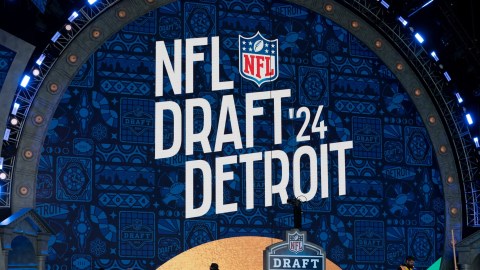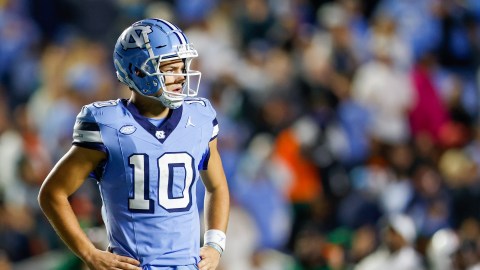Regardless of what you think about the New England Patriots’ explanation of texts regarding “the deflator” and threats to go to ESPN, their rebuttal to the Wells Report did make several salient points.
Perhaps the most important is that the NFL prejudged the Patriots’ guilt before the Wells Report even began.
“The hiring of Mr. (Ted) Wells and his law firm followed the written notice to the Patriots (on the day after the AFC Championship Game) that the League had already made a ‘preliminary finding’ that the Patriots may have tampered with the pressure of the footballs,” Patriots attorney Daniel L. Goldberg wrote. “See January 18, 2015 Letter from (NFL senior vice president of football operations David) Gardi. League personnel, thus, with no basis and no understanding of the effect of temperature on psi, had already prejudged the issues.
“The Colts footballs also lost psi, but no similar ‘preliminary finding’ was made regarding the Colts. The Wells investigators, then, were hired by the League to investigate an issue that the League had already prejudged. The report nowhere questions League personnel having made this ‘Preliminary Finding’ or any other prejudgments by League personnel.
“The January 18 letter to the Patriots also contained two significant misstatements that set a tone for this investigation and were an apparent source of media misreporting: 1) that one of the Patriots footballs was measured at 10.1 psi at halftime, an obvious misstatement; 2) that all of the Colts footballs measured within regulation — another misstatement.
“The League never corrected this notice in any respect. Why was the League content to have the Patriots dealing with this investigation for months based on inaccurate information? The investigators were not troubled by any of these obvious errors or by the League’s failure to correct them. The inaccuracies in this letter, combined with subsequent leaks to the media that were never corrected by the League placed this investigation on a footing of misinformation, to the Patriots substantial disadvantage. The report treats these inaccuracies as inconsequential (See page 101), when quite the opposite is true; they fueled international media misinformation to the Patriots serious detriment.”
The Patriots were deemed guilty as soon as the Indianapolis Colts tested a New England football on the sideline in the AFC Championship Game and told the NFL it measured at 11 PSI. Either the Colts’ pressure gauge was wildly inaccurate, or they exaggerated the degree to which the football was deflated. The NFL tested the football separately and provided three readings: 11.45, 11.35, and 11.75.
With knowledge of the Ideal Gas Law, which says the Patriots’ footballs, if inflated to 12.5 before the game, would have measured between 11.32 and 11.52 PSI after the first half, these readings wouldn’t have raised red flags and might not have even initiated the league to test all of New England’s balls at halftime. The league apparently didn’t know inflated objects lose air pressure in the cold (or to what degree they lose air pressure) and presumed the Patriots guilty.
The NFL then tested 11 Patriots footballs and four Colts footballs, noticed New England’s were much lower and launched an investigation, already prejudging the team’s guilt.
The first report of the Patriots’ football air pressure came from ESPN’s Chris Mortensen. A source incorrectly told Mortensen 11 of the Patriots’ 12 footballs were under-inflated by two PSI. It’s painful to think how much time was wasted assuming this report was accurate.
Now that the average football fan has a better understanding of the Ideal Gas Law than they do of how to calculate passer rating, it’s obvious the Wells Report’s data on the Patriots footballs’ air pressure is flawed. The officials’ two gauges varied wildly, the Colts’ footballs were able to heat up before being tested, referee Walt Anderson didn’t record his pregame readings, the Patriots’ footballs were stored differently on the field, and Anderson remembers using a higher-reading gauge, but Wells chose to assume he used a lower-reading gauge.
The PSI data recorded at halftime is difficult to take seriously because of these various flaws. The Colts’ footballs were stored in a garbage bag, while the Patriots were exposed to the elements. The Patriots also raised the possibility that Anderson tested their footballs with one gauge before the game and the Colts with another.
Without solid data backing an assumption the Patriots deflated their footballs, one would think hard evidence would be needed to prove New England guilty. Wells found damning text messages between Patriots staffers John Jastremski and Jim McNally dated from May and October, but none from January. Jastremski and McNally vaguely implied quarterback Tom Brady was aware of some sort of nefarious conduct, but his name wasn’t specifically mentioned, and it came after a game in which the Patriots’ footballs obviously weren’t deflated. The officials actually had jacked up the footballs to 16 PSI in an October game against the New York Jets.
Without the assumption of the Patriots’ guilt, built largely on their reputation earned from Spygate, those texts probably wouldn’t be enough to implicate Brady or the team. If Brady or the Patriots are able to get in front of a neutral arbitrator, they probably have a good shot at lessening or erasing their punishments based on lack of solid evidence and the shaky scientific proof.
Who knows where we would be right now without incorrect media leaks or with basic scientific understanding, but at least we’ve learned our lesson.
Thumbnail photo via Joe Camporeale/USA TODAY Sports Images




